From Vision To Reality: Designing A Language App For Cultural Connection
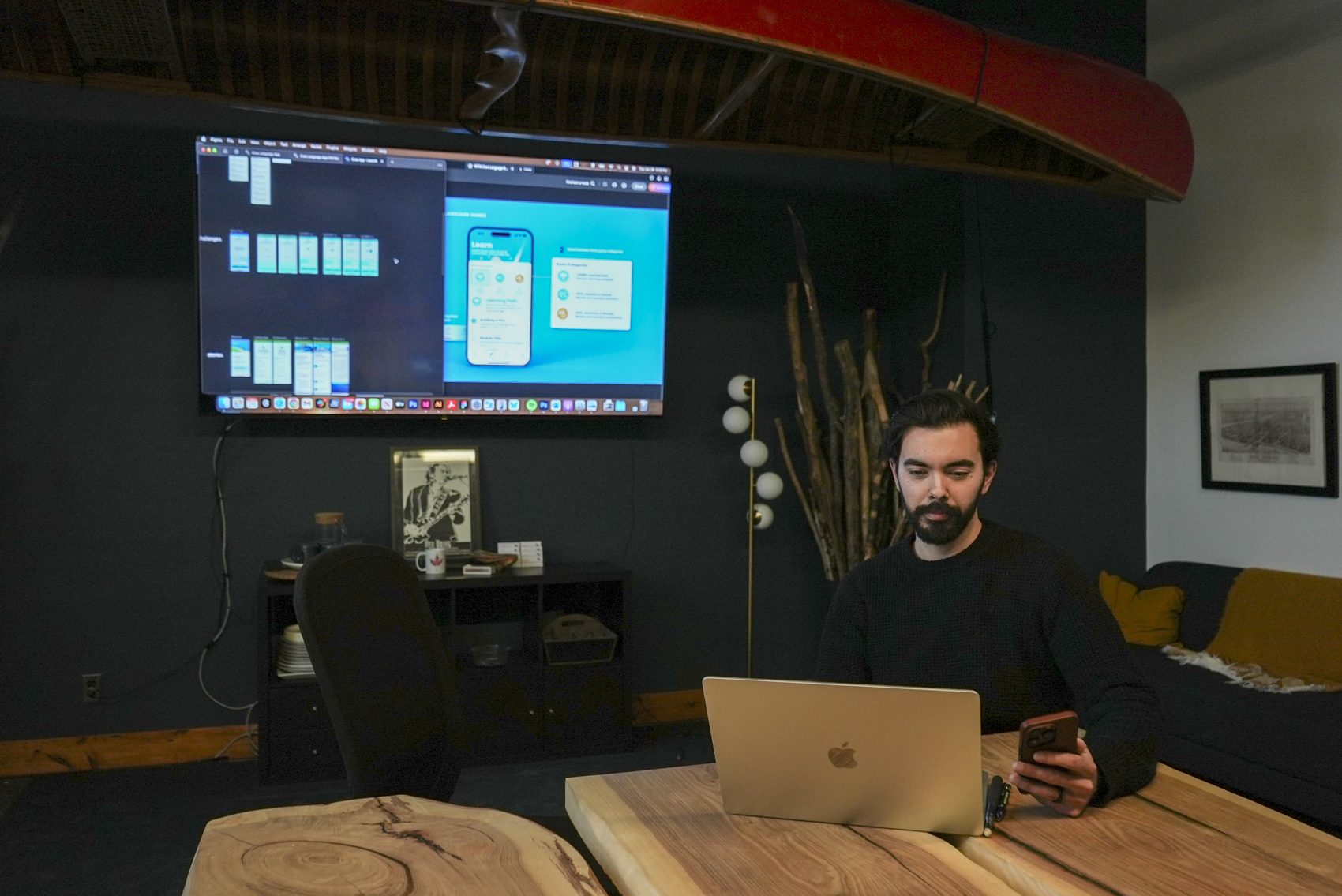
When Senior Graphic Designer, Jon Denby, first learned about the opportunity to work with York Factory First Nation (YFFN) and HTFC on the Inineemowin: York Factory Cree app, it was an open-ended challenge the team was excited to take on. A “language app” sounds straightforward at first, but Jon recalls how the project quickly evolved into something far more dynamic and engaging.
“It started out pretty open-ended,” Jon explained. “Language app—we think just language, basically, right? But during the kickoff meeting, the scope expanded. We got a real sense of the community and their identity, and right away there was a connection. I thought, ‘Oh yeah, this could be really cool.’”
York Factory First Nation was wanting to create an app to revitalize their community’s connection to Inineemowin – colonially referred to as “Cree” – language. Connecting those of all ages to their language, their stories and culture, and most importantly, their community was their goal. With a goal of this weight and importance, it was clear a truly innovative approach would be needed to fully bring the community’s dream to fruition.
One standout moment came from a suggestion by Shaun Vincent, ‘What if you open the app and it drops you on a map of the community?’ At first, I thought, how are we going to make that work? But the idea had so much potential—it added a layer of immersion and uniqueness we hadn’t considered before,” Jon said.
From that spark of an idea, the team explored how to incorporate the map as a foundational element of the app in an organic way. “We didn’t want the map to be just an option,” Jon emphasized. “It had to be integral to the experience, but we also needed the interface to work for all users. That meant giving people the choice to navigate through the map or use familiar menu structures.”
The guiding principle, informed by meetings with community members and HTFC, was clear: the app had to balance fun, accessibility, and usability for a broad audience. “It needed to be fun enough for kids, cool enough for anyone to want to use, and simple enough for older adults. That idea shaped everything—from how the app looks to how it’s structured and how it works,” Jon shared.
This early vision laid the groundwork for an app that combines cultural depth with user-friendly design, ensuring it resonates with all members of the York Factory First Nation community while honouring their language and traditions.
Coming Together for a Nation
The development of the Inineemowin: York Factory Cree app was a true collaborative effort. Through constant communication and collaboration between York Factory First Nation (YFFN), HTFC, and the internal team at Vincent Design, the project became a dynamic exchange of ideas, insights, and cultural storytelling.
Jon Denby noted the unique dynamic of working across teams: “It wasn’t just me, Jordan, and Shaun internally—we also worked with the video and content teams. Then, externally, we had HTFC and the YFFN community. Everyone brought something different to the table, and that made the project richer.”
A key partnership occurred between HTFC and Vincent Design, who worked closely together to develop lesson plans for the app. HTFC’s visits to the Vincent Design office were frequent, with regular meetings involving multiple team members, before presenting next iterations to the community, to gauge whether we were still collectively on the right track. These interactions with the YFFN community always brought an unexpected warmth to the process.
“The community meetings were always a great experience,” Jon shared. “They’d set this welcoming tone with laughter and storytelling right at the start. It wasn’t what you expect from a client meeting, and it was such a nice way to connect. Talking to the elders felt like speaking with someone you’ve known for years. They brought up ideas we hadn’t anticipated and showed how deeply personal the app’s content was to them.”
This collaboration sparked innovative ideas, particularly when the community responded to features like the map or lesson modules. Jon mentioned that they loved the map concept and wanted to see their coastal region included. While that addition wasn’t feasible for the app’s first phase, it became a clear priority for future updates.
The community’s input wasn’t limited to content suggestions—they also provided valuable insights into user experience. “Someone suggested adding a button to share words or stories on Facebook. It was something we had considered putting in already, but hearing them express interest validated the idea,” Jon explained.
These meetings also ensured fundamentally the right decisions were being made. “When we showed the app’s stories section, the community lit up. They’d see photos and hear voices of people they knew, and it reminded us how personal this was for them. It wasn’t just a tool; it was a way to connect with their culture and pass it on,” Jon said.
Through constant collaboration, the Inineemowin project exemplified the power of community-centred design. It wasn’t about creating an app; it was about capturing identity, celebrating language, and fostering connections between people and their heritage.
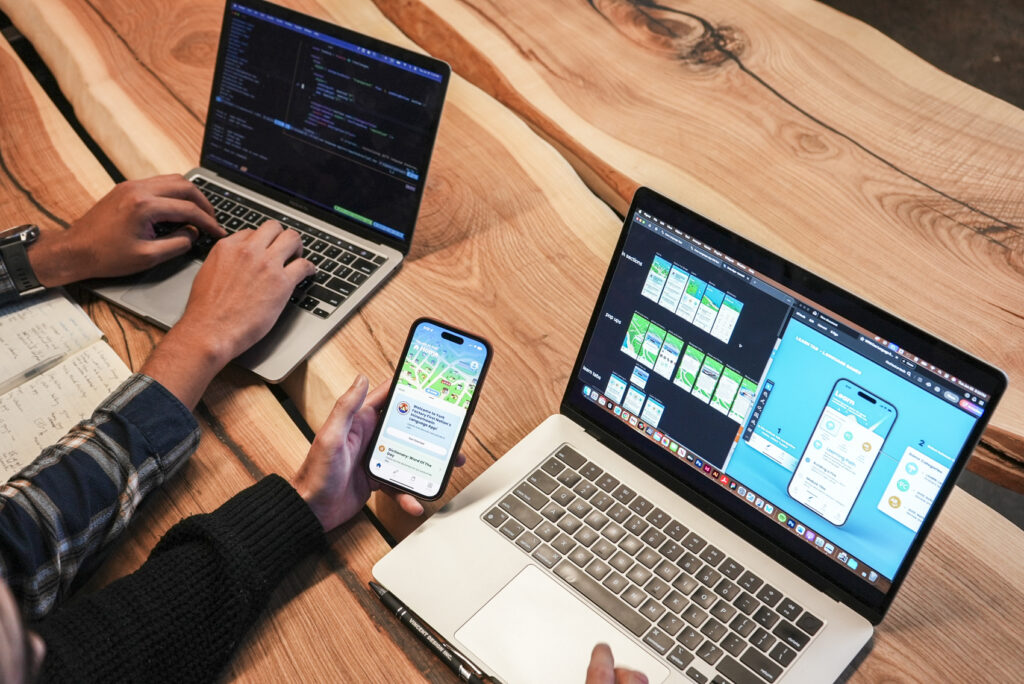
Overcoming Challenges: Defining Scope and Tailoring Design
The process of designing the language app brought unique challenges that pushed the team to think critically and creatively. One of the earliest hurdles was defining the scope of the project, particularly in terms of gamification.
Jon described the initial discussions with his colleagues, Jordan and Will, as pivotal in shaping the app’s direction. “Gamification is such a broad term,” he noted. “It’s very open-ended, so we had to set some realistic boundaries while still delivering something engaging. We decided on three game types and then dove into research—figuring out what worked, what didn’t, and what would resonate most with the community.”
A significant focus was balancing the app’s visual and functional elements. “Initially, there were talks about incorporating a lot of custom icons and illustrations,” Jon explained. “But we decided to concentrate those efforts on the map, making it the app’s visual centerpiece. The modules and lessons were designed to let the content shine, ensuring clarity and accessibility.”
User Experience: Trial, Error, Refine
Structuring the app’s Learn tab was one of the most intricate challenges. “We had to balance the syllabics, words, and lesson plans,” Jon shared. “It wasn’t straightforward at first, and it took time to filter through a lot of ideas. The goal was to simplify something complex into a structure that felt intuitive.”
After much trial and error, the team landed on a solution: a learn tab with three sub-tabs to guide users through the content. “It seemed like the best way to do it,” Jon said. “But even getting there involved refining countless details.There were frequent discussions between all of us, ‘What if we tried it this way? Or that way?’ It was a lot of collaboration and iteration to make everything feel seamless.”
The Community’s Role in the Design Process
Throughout the process, the feedback and engagement with York Factory First Nation (YFFN) community were instrumental. “We showed early designs to the community, and their enthusiasm was evident from the start,” Jon recalled. “They were on board the whole time, which made it exciting and rewarding to see their reactions.”
Keeping the community’s needs and desires at the forefront, the app’s design became a bridge between tradition and modern learning tools. From gamification to navigation, every element was carefully tailored to ensure the app was both meaningful and accessible.
“The whole process pushed us creatively and technically,” Jon reflected. “We learned a lot along the way, from setting the scope to refining every last detail. It was a rewarding challenge that showcased the power of collaboration and adaptability.”
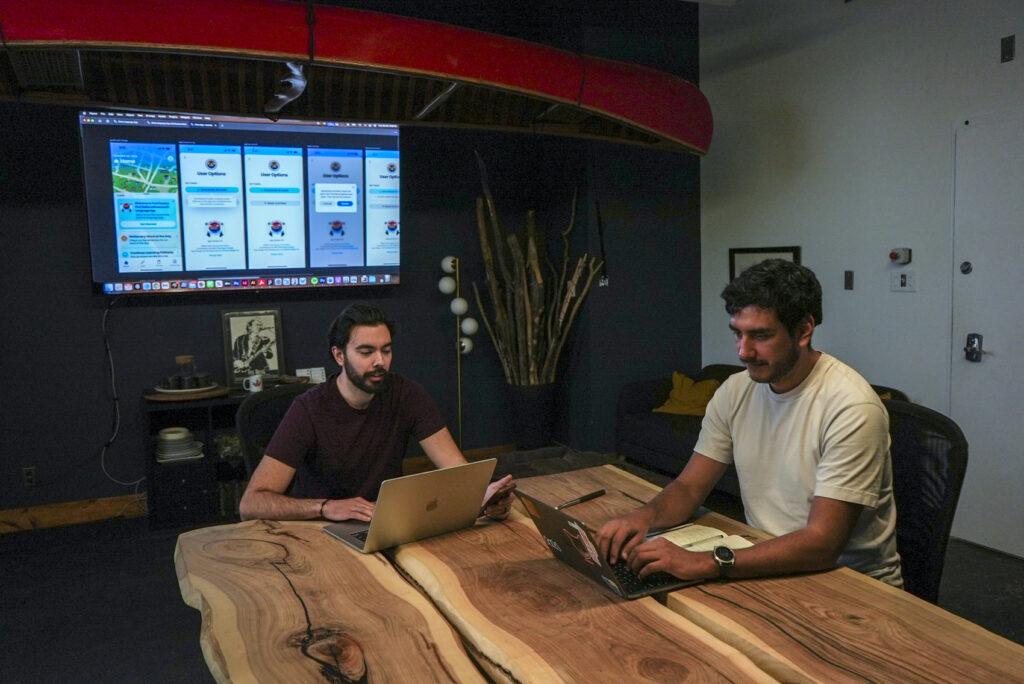
Looking Ahead: Evolving Approaches
This app not only works towards being a significant cultural impact, but was also a great learning opportunity for Jon Denby and the team at Vincent Design. Reflecting on the experience, Jon sees that it was a good experience for expanding our capabilities, as well as a good template for approaching similar challenges for other projects, where keeping the community at the centre of the project is key.
“This app gave us a strong foundation to build on,” Jon noted. “While we wouldn’t simply replicate it for another community, the lessons we’ve learned—both in terms of design and workflow—position us well for future projects. Whether it’s creating another language app or tackling something entirely different, we now have a clearer understanding of what works and how to approach it more effectively.”
The app’s unique challenges also provided moments of clarity that informed Jon’s creative process. “There were several ‘aha’ moments throughout,” he explained. “One of the first was figuring out how to incorporate the map into the user experience. It wasn’t obvious at first, but once we decided the map would always be present, everything else began to fall into place. Each section of the app had similar moments where everything clicked, from the learning modules to the dictionary.”
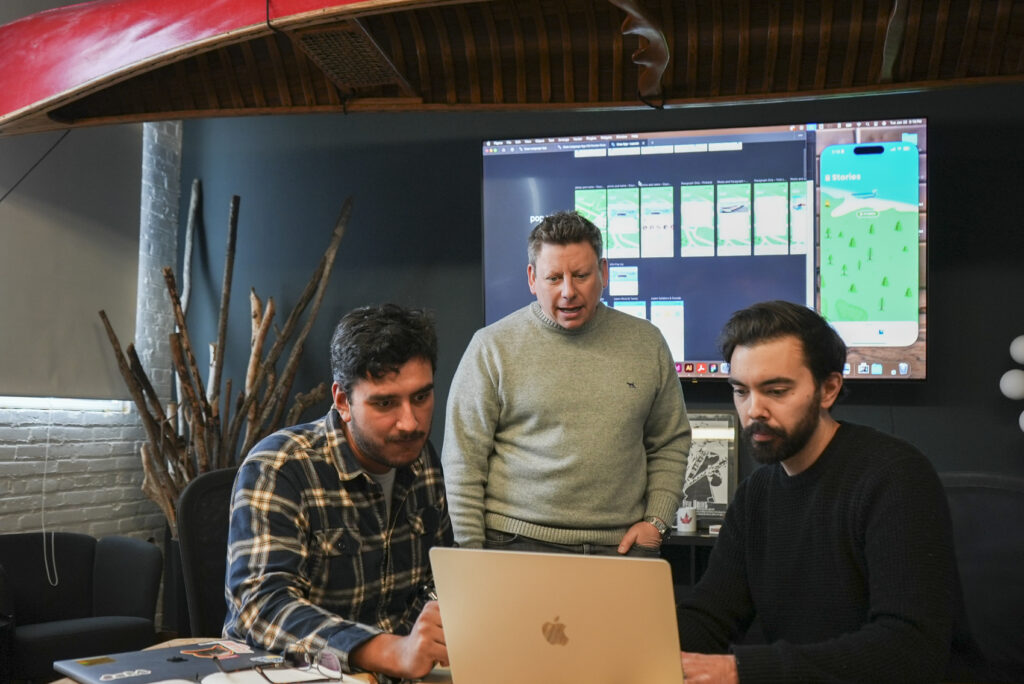
A New Approach to Projects
Jon credits the project with shaping how he thinks about and tackles new challenges. “Every project should be a learning experience,” he said. “You don’t want to just follow the same process every time. This app reminded me of the importance of adapting to the specific needs of each project.”
While it’s difficult to pinpoint exactly how the experience has changed his approach, Jon acknowledges that it has influenced his mindset in subtle but meaningful ways. “It’s not just about the technical details or the specific features—it’s about how you think through the problems and build on past experiences. Even if a future project is entirely different, there are always parallels you can draw and lessons you can apply.”
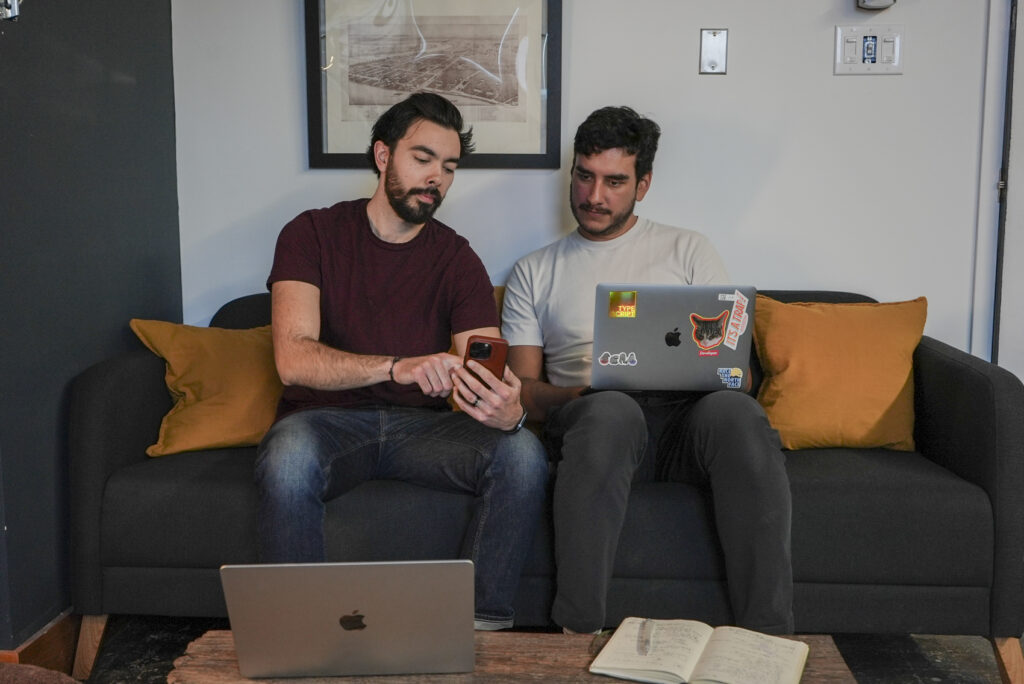
Paving the Way for Growth
Jon sees the app as a road map to explore even more ambitious projects. “We’ve talked about how this app could inspire other communities,” he shared. “It’s exciting to think about how we could take what we’ve done here and adapt it to other contexts, making each one unique while still leveraging what we’ve learned. It’s a guide for future projects, even in ways we might not immediately recognize.”
Our values of adaptation and to always be learning ensures that each of our projects is not just a task to complete but an opportunity to grow and innovate. As Jon put it, “It’s all about evolving—taking on challenges, finding those ‘aha’ moments, and creating something meaningful every time.”
